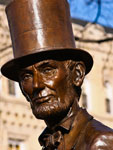Anthony Pellegrino on Teaching Segregated History
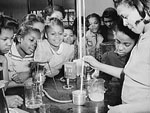
For a time early in my teaching career, I lived in the historically black neighborhood in St. Augustine, FL, known as Lincolnville, which had been the home to prominent black civil rights leaders Henry and Katherine "Kat" Twine as well as the location of several stops by Martin Luther King, Jr. during the 1950s and 1960s. About three blocks from my house was the Excelsior School which served black students from the neighborhood and surrounding areas from the early 20th century to the late 1960s. I passed by the building every day on my way to teach history at a high school some 30 years after integration. After living in the neighborhood, I learned that the Excelsior building had ceased operation as a school after the 1967–68 school year when its students were finally integrated. The state took over the building some time after and used it for offices during the 1980s, but it was vacant for much of the decade before I moved into the area.
I had an idea to use a room or two in the building to provide some after-school tutoring. You see, several of my students lived in this neighborhood. Some had struggled academically and a few had dropped out. I would see them, unemployed and idle on the streets at all hours. This neighborhood, which had seen hard times economically and socially since its heyday in the 1950s as an African American business hub was, by then, riddled with drugs and occasional violence. My goal was to operate a class to prepare my former students and any other neighbors for a high school diploma through the GED test. In my search for access to this historic building I learned that a former teacher and school board member was just beginning the process of renovating the property to become a museum and cultural center for the neighborhood. As I began the program, I learned more about the school and the education its teachers provided. I learned that many prominent black leaders were educated at this school. I learned that (when allowed) this school not only competed favorably with surrounding white schools in athletics, but academics as well. The artifacts, including photographs, newspaper articles, and yearbooks that were being gathered for the museum, presented a vibrant school with classroom and hallway walls covered in empowering posters and exemplary student work, a decorated debate team, Latin club, and more.
As a history teacher I was intrigued. The narrative of segregated education as presented in the textbook I used showed none of this. In my undergraduate studies in history education, I learned little beyond the traditional narrative. My students came away from my classroom with the idea that, without qualification, black schools were inferior, and I was complicit in their misunderstanding. The message was that only with integration were black students given the opportunity to get a quality education. I realized that this message failed to dig deep enough. It failed to present the complexities that existed in these disparate systems, to recognize the education that was occurring in spite of remarkable challenges. Students need opportunities to challenge the traditional narrative, and this topic is well suited to illustrate that opportunity.
Since my time at Excelsior, I have had the opportunity to talk with some former students, teachers, and administrators who shared stories from their time there. What I found from these interviews echoed the themes discovered by Vanessa Siddle Walker in her extraordinary meta-analysis of articles related to segregated schools from the Fall 2000 issue of the American Educational Research Association journal. Her findings showed that schools in segregated communities were not only centers of education but also often fundamental to neighborhood cohesiveness. Along with fostering nurturing learning environments with high academic expectations, these schools often served as community centers, social gathering places, and information hubs.
In the interest of presenting our students with a more inclusive history, teachers can presents sources to students that challenge the idea that the black community was incapable of providing quality education to their students and that only through integration into the white school system were black students able to receive a worthwhile education. With review of articles such as Siddle Walker's, teachers themselves can become more knowledgeable about the historiography of segregated education beyond the traditional narrative. Through examination of web resources from the Library of Congress, the National Archives, and others, teachers can show that even in the face of inadequate facilities and tremendous societal discrimination, many of these schools educated generations of future teachers, doctors, lawyers, civil rights leaders, and informed and active democratic citizens with constructive learning environments and challenging curriculum. For instance, "Education Resources on School Desegregation" on the National Archives website provides useful resources as well as implementation ideas and strategies for the classroom.
Allowing students the chance to discover sources for themselves, which open up this more nuanced paradigm, can also serve as an entry into this topic and provide experience in moving beyond the textbook when examining the past. Students may begin by using keywords such as "segregation and education" in the Library of Congress site to get started in their search to challenge the traditional narrative of African American education.
The notion that a segregated school system is moral or even tenable is nonsensical. Schools that educated black children during the Jim Crow era struggled with inferior facilities and resources. However, in the spirit of good history, teachers have an opportunity, within the theme of racial segregation, to challenge the traditional narrative that separate and unequal education extended to the abilities and desires of teachers, administrators, and parents to provide their students with quality education.
Walker, Vanessa Siddle. "Valued Segregated Schools for African American Children in the South, 1935-1969: A Review of Common Themes and Characteristics." Review of Educational Research 70:3 (Fall 2000): 253-285.
Links to Siddle Walker's abstract as well as other full-text articles related to the segregated school experience.
Walker, Vanessa Siddle. "Dr. Emilie Vanessa Siddle-Walker." Caswell County Historical Association. Accessed June 2, 2011.
Siddle Walker's biography with several references.
Morris, Jerome. "Research, Ideology, and the Brown Decision: Counter-narratives to the Historical and Contemporary Representation of Black Schooling." 2008. Teachers College Record. Accessed 2 June, 2011.http://www.tcrecord.org/Content.asp?ContentID=14616
Jerome Morris's Teachers College Record article.
This American Association of Colleges for Teacher Education (AACTE) curriculum guide and PBS website include some material on segregated schools.
The Library of Congress looks at the history of segregated schools— as does the National Archives—and you can find more about Brown vs. Board with a quick search of our site.
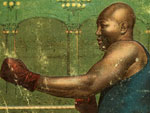

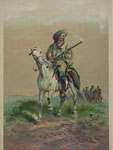
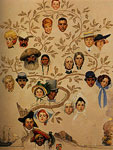

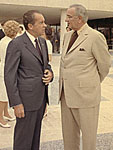
![Photo, [Andrew Johnson, half-length portrait, facing left], 1865-1880, A. Bogardus, Library of Congress Photo, [Andrew Johnson, half-length portrait. . . ], 1865-1880, A. Bogardus, LoC](/sites/default/files/andrewjohnsonand113x150.jpg)
